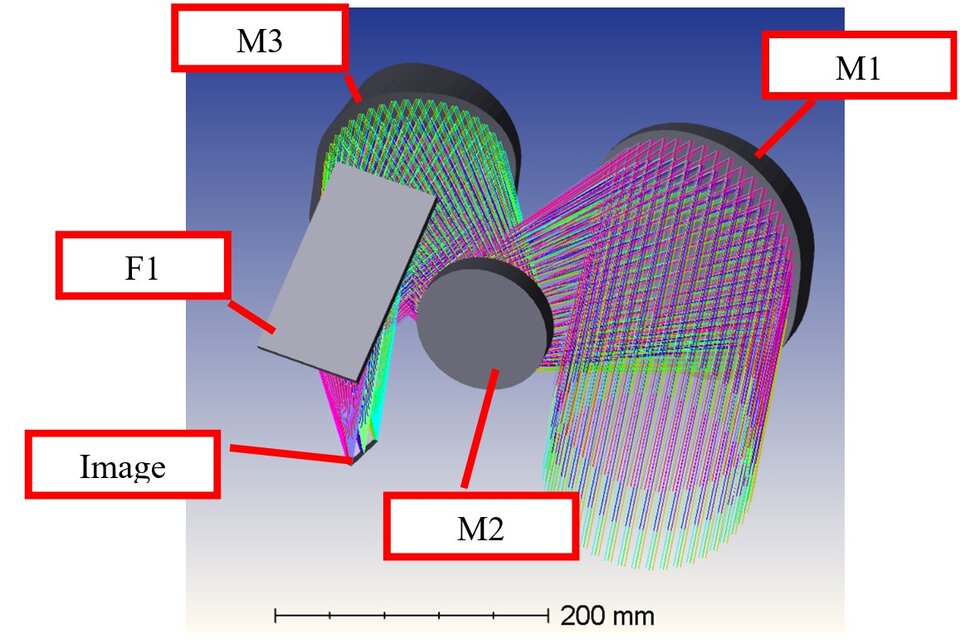Freeform catoptric telescope with pointing and nodding capabilities
| 768 - Abstract: |
| The invention is a catoptric telescope using an optical design based on freeform mirrors. This design allows to scan the line of sight by tilting one of the mirrors with optical power. This capability, when used on board of a low Earth orbit satellite, allows to keep the telescope pointed to the area of interest, an observation mode called ‘pointing and nodding’, or to partially compensate the satellite motion relative to the area of interest, an observation called ‘partial motion compensation’. Both these mode operations allow to increase the detector’s integration time, and therefore, to improve the signal-to-noise ratio of the acquired image. The invention is a product and the methodology of using it. ESA is looking for partners who would be interested in licensing and implementing this invention. |
Description:
The exemplary optical system is based on a Three-Mirror Anastigmat (TMA) design. The telescope has an aperture of 150 mm and an f-number of 2.5. The optical design of this embodiment of the invention is based on a TMA telescope using non-rotationally symmetrical mirrors, known as freeform mirrors (Figure below).
This optical solution, which deviates from a standard TMA implementation, is tolerant to the tilt of the mirror M2, therefore the telescope line of sight can be changed by tilting M2. The spatial resolution of the instrument depends on the rotation of the Line of Sight (LoS). The best performance is reached at the nominal position of the M2 mirror with symmetric decrease to both sides with increasing rotation angle. The optical quality of the telescope is practically unaffected for changes of line of sight up to +/- 1 arcmin in the along track direction thanks to the use of free form mirrors. The tilt of M2 is obtained by mounting the mirror on a tilting mechanism that is commercially available.
Innovations and advantages:
By rotating the LoS by approximately +/- 1 arcmi an integration time up to 50 ms can be achieved, as the telescope LoS will be constantly pointed on the selected target. This gives fourfold increase of the Signal to Noise Ratio (SNR) with respect to the normal pushbroom observation for a 26 m Ground Segment Distance (GSD). Larger angles, i.e. +/- 2 arcmin, could be achieved with a modest degradation of the image quality, offering the flexibility to further improve the SNR at the expensed of ground resolution.
The pointing and nodding operation being achieved by rotating one of the powered telescope mirrors, there is no need of an external scanning mechanism. This reduces the mass and complexity of the telescope.
Domain of application:
Remote sensing, spectrometry.


